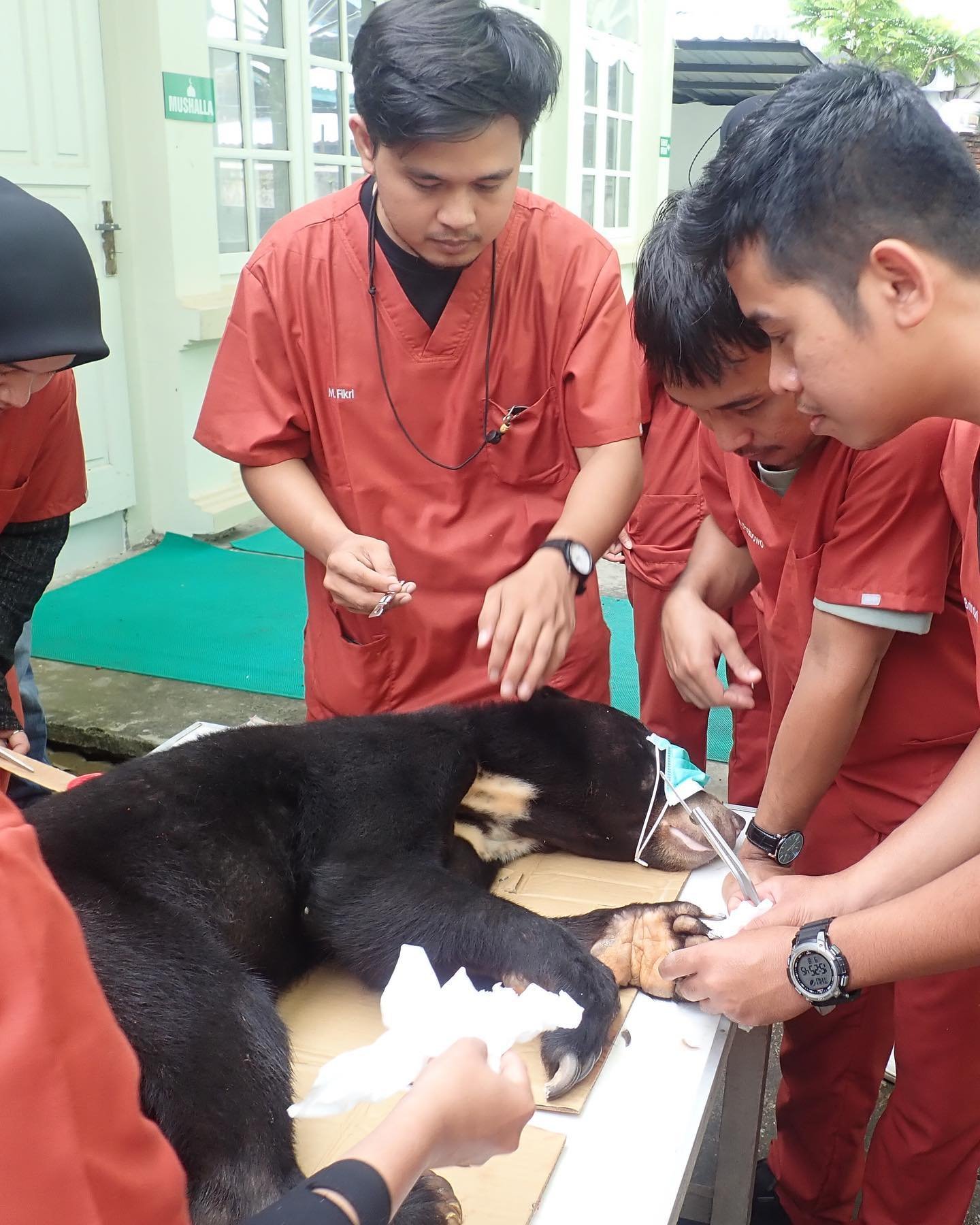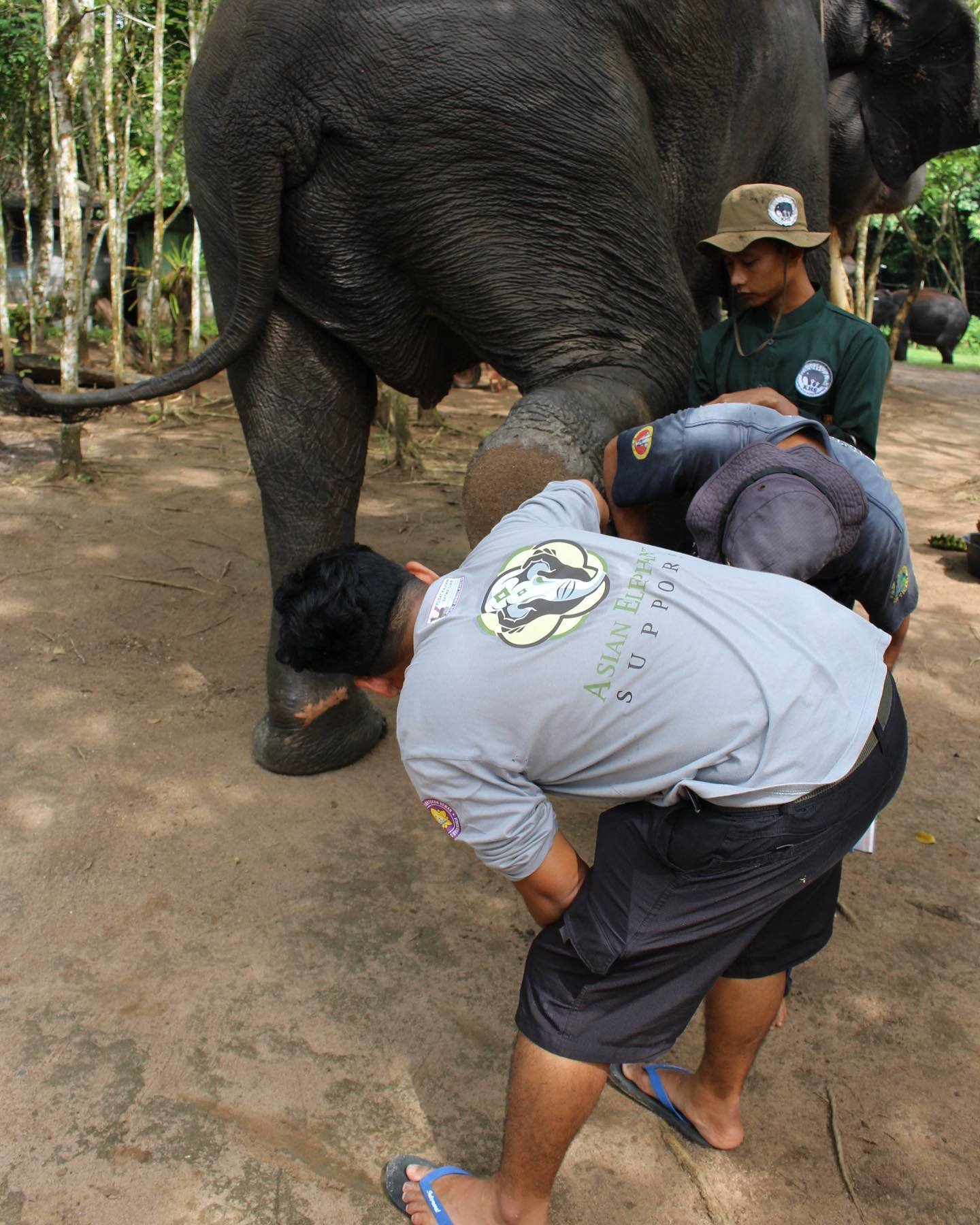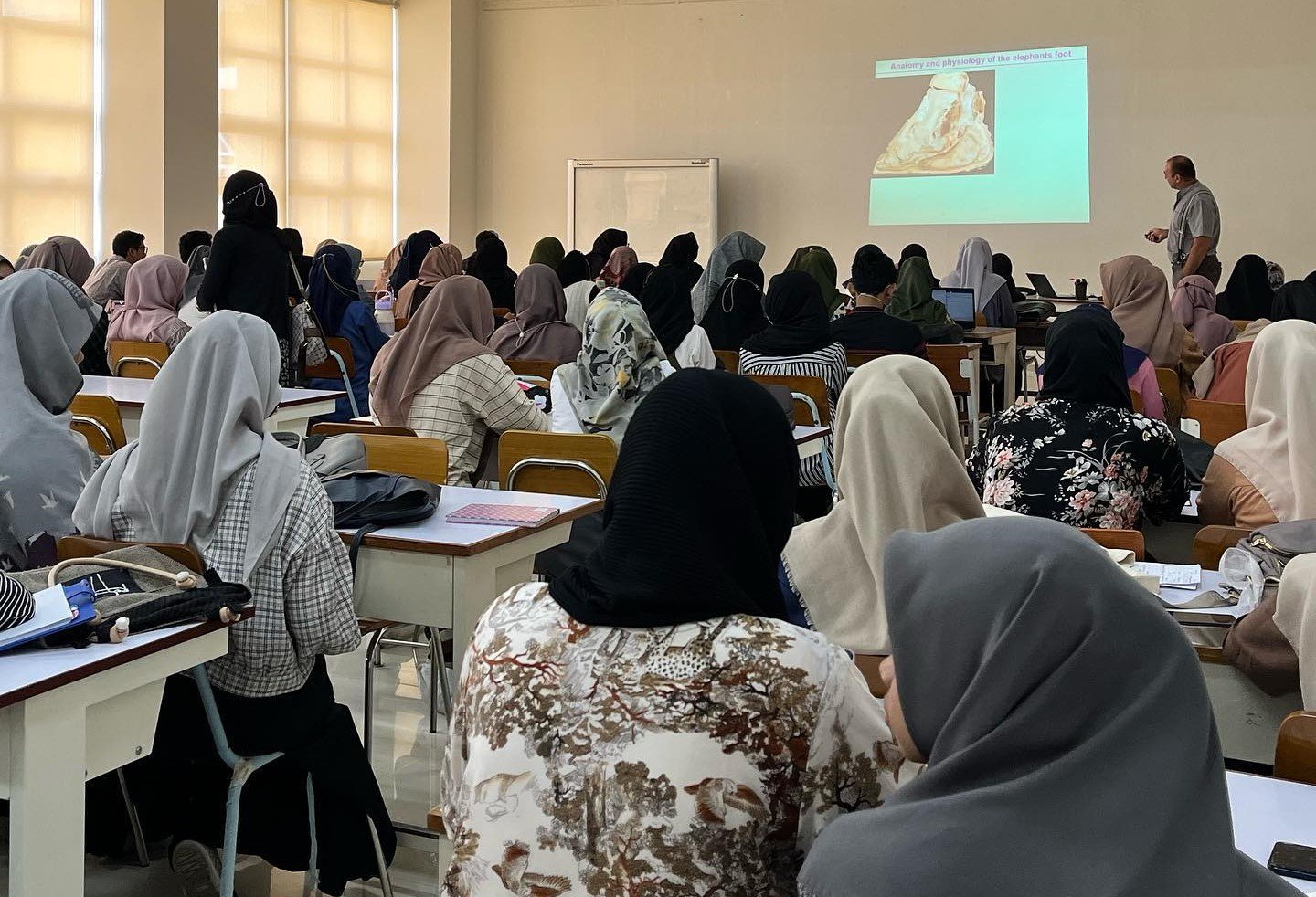Prepared by Elena Pranatio and Dr. Christopher Stremme
The Conservation Response Units (CRU) in the Way Kambas National Park (WKNP), which are employing captive elephants and mahouts from the Way Kambas Elephant Conservation Center to conduct human elephant conflict management and habitat patrols, are hugely effective and contribute much to reducing human-elephant conflict (HEC) and securing the WKNP habitat.
The first two CRUs were established with the construction of permanent basecamps in 2011 and 2013 on the northwestern border of the WKNP in the areas of Bungur and Tegal Yoso. This is one of the HEC hotspots having caused ongoing loss of almost all crops close to the WKNP border; therefore leading to great resentment against the WKNP and wild elephants from local communities.
The two CRU base camps at Bungur and Tegal Yoso each have 5 captive elephants used for habitat patrols and, if needed, to drive off wild herds that venture into farmland. During daily routine patrols the two units cover more than 15 km of WKNP border and a total of about 400km² of national park area. Regular staff of each CRU unit consists of 5 mahouts from the WKNP and 4 people from the local communities who are employed and trained as permanent staff of the CRU teams. Besides conducting patrols and wild elephant drives inside the national park, the CRU teams have also encouraged teams from local communities to build observation posts outside the WKNP on its border area and conduct regular night watches to detect wild elephants early and guard their valuable crops. The teams from the local communities have been trained in techniques of how to drive away wild elephants if they get close to the WKNP border and if needed, get backed up by the experienced CRU teams with its elephants.
A communication system, via mobile phones, between the CRU teams and the local community teams has been established and functions as an early warning tool ensuring ongoing information exchange between the CRU and local communities about elephant migrations close to the WKNP border. This allows for the timely coordination for needed crop guarding and wild elephant drives.
Currently 11 villages in the Bungur – Tegal Yoso area benefit from and participate in this HEC mitigation strategy with the CRUs. As a result of this work, the occurrence of incidents where wild elephants actually succeeded to pass the WKNP border and reach farmland has been reduced by more than 70%. The actual loss of crops due to the early warning and quick intervention has been reduced by more than 90%.
Due to the massive decrease of loss of crops, and thus increased income, the local communities have become much more willing to withdraw from most illegal activities inside the WKNP such as logging, cultivation, poaching, and cattle grazing and have become willing to accept the CRU’s law enforcement role for the protection of the WKNP area as undisturbed habitat for wild elephants. This has led to a reduction of such illegal activities by more than 90% in the Bungur-Tegal Yoso area.
Due to the success of the Bungur and Tegal-Yoso CRUs, in 2014 the head of the National Park has asked donors such as IEF, AES, and USFWS, who have supported the establishment and operation of the CRUs, for support to establish a new third CRU at the southwestern border of the WKNP, which is another HEC hotspot. IEF, USFWS, and AES agreed to support the establishment of this new CRU and in November 2014 the construction of the new basecamp in the Margahayu region was started. In January 2015 the CRU team were based at the camp while still under construction. The initial team consisted of 5 captive elephants and 5 mahouts from the WKNP Elephant Conservation Center. Shortly after the team arrived 4 young local people from nearby communities were employed and started to be trained as CRU team members. Training for such new team members consists of:
- Captive elephant management and care
- Habitat navigation by using basic orientation points in the area, maps, and GPS
- Wild elephant behavior, approach and driving strategies
- Conservation laws and regulations
Initial staff training and camp construction were completed in April 2015 and the new CRU is fully operational. During its daily routine patrols a border area of about 10km is covered. During the past months the CRU team has constantly monitored the movement of wild elephant herds close to the WKNP border. Already several situations have been encountered by the team where a large herd of more than 30 animals intended to cross the NP border to venture into villages and farmland. The team has managed these incidents by driving the elephants away from the border back into the forest area of the WKNP. Such drive operations often last for several days because during the drive, the wild elephants initially retreat in the nearby forest, but during the next night they try to enter into the farmland again. This means the CRU team has to stand by on guard for several days until the wild herds finally give up and retreat back deeper into the WKNP forest area.
The people from local communities start to respond positively to the presence and activities of the new CRU as major crop raiding events by wild elephants have been prevented since the CRU has become active. The team has started to approach the people from the local communities to start building joint crop guarding and HEC mitigation strategies like in Bungur and Tegal-Yoso. The CRU team has already encouraged and supported the first community members for the construction of two observation posts outside the WKNP directly on its border with farmland. These posts are now already used for crop guarding during the night time by local community members.
The CRUs have become a very successful and important part of the WKNP habitat protection and HEC mitigation strategy. The successful implementation of the day to day field work is ensured by teams of highly motivated and skilled staff from the national park in close collaboration with local communities.
A major obstacle is that the WKNP agency itself does not have sufficient resources to fully finance the ongoing operation of CRUs. Therefor the continuation and possible expansion of the successful CRU work relies much on external funding support.








































